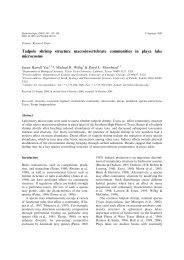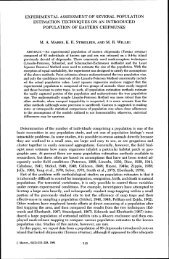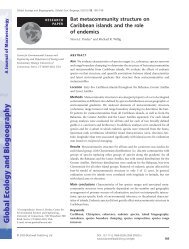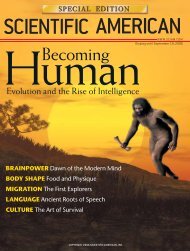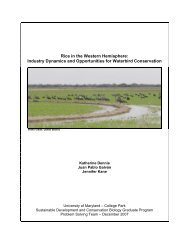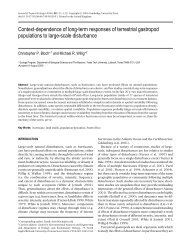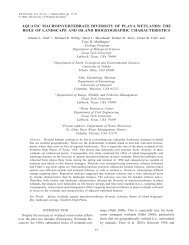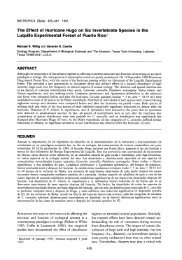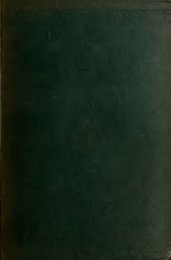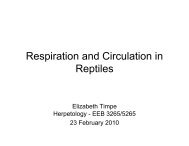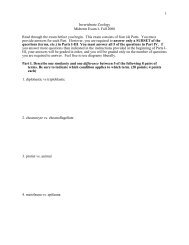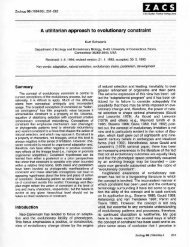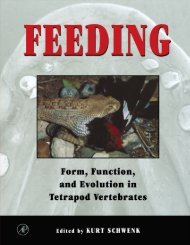Comparative biology and the importance of cladistic classification: a ...
Comparative biology and the importance of cladistic classification: a ...
Comparative biology and the importance of cladistic classification: a ...
You also want an ePaper? Increase the reach of your titles
YUMPU automatically turns print PDFs into web optimized ePapers that Google loves.
78 K. SCHWENK<br />
noted in <strong>the</strong> literature. Second, <strong>the</strong> constituent families <strong>of</strong> <strong>the</strong> Ascalabota <strong>and</strong><br />
Autarchoglossa have changed over <strong>the</strong> years as additional systematic work has<br />
been completed (e.g. Pygopodidae is included in Gekkota in studies since Camp,<br />
as is Xantusiidae in some). Third, <strong>the</strong> primary literature on squamate sensory<br />
<strong>biology</strong> has focused on different behaviours, e.g. predatory behaviour, courtship<br />
behaviour, kin recognition, conspecific recognition, heterospecific identification,<br />
predator detection, aggregation, etc. (see Halpern, 1992). Thus <strong>the</strong> data<br />
available for different taxa vary both qualitatively <strong>and</strong> quantitatively, fur<strong>the</strong>r<br />
confounding attempts at generalization (Schwenk, 1993b). The chemosensory<br />
literature has been varyingly successful at incorporating <strong>the</strong>se changes; however,<br />
<strong>the</strong>re has been a general failure to reject <strong>the</strong> basic dichotomy. Ra<strong>the</strong>r, some<br />
workers have attempted to retain <strong>the</strong> dichotomy while simultaneously<br />
incorporating <strong>the</strong> rapidly accumulating modifications <strong>and</strong> exceptions. For<br />
example, Nicoletto (1985: 41 1) attempted to assimilate <strong>the</strong> growing body <strong>of</strong><br />
chemosensory data into <strong>the</strong> flawed dichotomy:<br />
The <strong>importance</strong> <strong>of</strong> chemosensation is associated with <strong>the</strong> major subdivision <strong>of</strong> lizards,<br />
<strong>the</strong> Ascalobota [sic] <strong>and</strong> <strong>the</strong> Autarchoglossa (Stamps, 1977). Ascalobotans (e.g.,<br />
Agamidae, Chamaeleonidae, Gekkonidae, Iguanidae <strong>and</strong> Xantusiidae) have blunt<br />
tongues, low rates <strong>of</strong> tongue flicking (RTF) <strong>and</strong> generally use visual cues to mediate<br />
social behavior <strong>and</strong> predation (Bissinger & Simon, 1979; Burghardt, 1970; Reznick el<br />
al., 1981). However, some iguanids use chemical cues to detect conspecifics (Duvall,<br />
1979, 1981) <strong>and</strong> geckos may use chemical cues to detect prey (Dial, 1978), thus<br />
demonstrating that chemosensation may be used by ascalobotans. Autarchoglossan<br />
lizards (e.g. Anguidae, Lacertidae, Teiidae, Scincidae <strong>and</strong> Varanidae) have slender<br />
modified tongues (forked to varying degrees), high RTF, <strong>and</strong> use both visual <strong>and</strong><br />
chemical cues to mediate social <strong>and</strong> predatory behavior (Burghardt, 1970, 1980;<br />
Duvall el al., 1980; Perrill, 1980). Although autarchoglossan lizards use both visual<br />
<strong>and</strong> chemical cues during predation, <strong>the</strong> manner in which <strong>the</strong>se cues interact to<br />
initiate predatory behavior is unknown.<br />
Cooper, ( 1989a: 472) similarly attempted to reconcile <strong>the</strong> existing dichotomy<br />
with new behavioural data <strong>and</strong> also alluded to a growing dissatisfaction with <strong>the</strong><br />
traditional <strong>classification</strong>. Apparent in both papers, <strong>and</strong> elsewhere, is <strong>the</strong><br />
recognition, first, that <strong>the</strong> sensory <strong>biology</strong> <strong>of</strong> squamates does not break down<br />
neatly into a dichotomy, <strong>and</strong> second, that <strong>the</strong> dichotomous <strong>classification</strong> is, itself,<br />
suspect. One wonders why <strong>the</strong>se observations, combined with <strong>the</strong> <strong>of</strong>ten noted<br />
exceptional nature <strong>of</strong> gekkotans as highly chemosensory ascalabotans, did not<br />
trigger sooner a rejection <strong>of</strong> <strong>the</strong> original hypo<strong>the</strong>sis <strong>of</strong> a visual Ascalabota <strong>and</strong> a<br />
chemosensory Autarchoglossa. Ra<strong>the</strong>r, <strong>the</strong>re is repeated retention <strong>of</strong> this original<br />
association. Such is <strong>the</strong> power <strong>of</strong> a <strong>classification</strong>.<br />
Resolution<br />
Estes et al. (1988) made available a <strong>cladistic</strong> reanalysis <strong>of</strong> relationships among<br />
<strong>the</strong> squamate families (Fig. 2B). Perhaps <strong>of</strong> most <strong>importance</strong> to <strong>the</strong> non-<br />
systematic community was its explicit formulation <strong>of</strong> a <strong>cladistic</strong> <strong>classification</strong><br />
(see above) reflecting <strong>the</strong> sister relationship between <strong>the</strong> Gekkota<br />
(Gekkonidae + Pygopodidae) <strong>and</strong> <strong>the</strong> Autarchoglossa (retaining, essentially,<br />
Camp’s (1923) constituent taxa), by including <strong>the</strong>se toge<strong>the</strong>r in <strong>the</strong><br />
monophyletic taxon, Scleroglossa. A phylogenetic dichotomy is <strong>the</strong>refore evident



